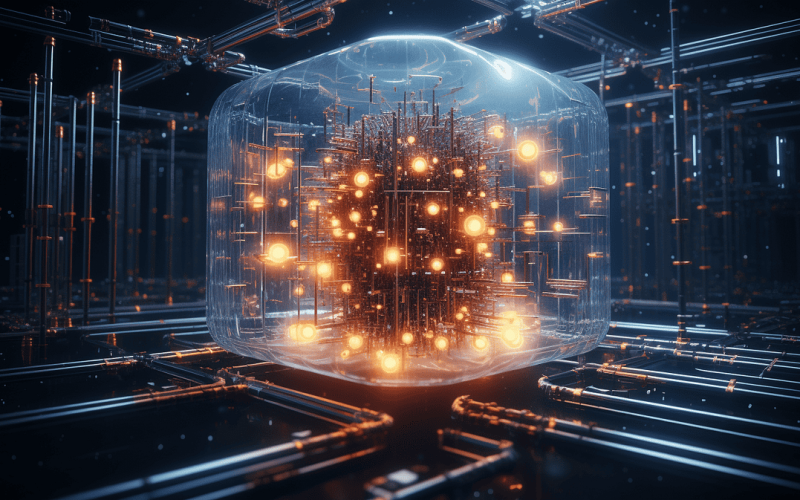Introduction
The year 2025 is not just another page on the calendar. It is a turning point in how we interact with machines, manage data, and solve complex problems. Two technologies are leading this shift: artificial intelligence and quantum computing. Together, they are not only transforming industries but also rewriting the rules of what technology can do.
Artificial intelligence is becoming smarter, faster, and more efficient. It powers everything from virtual assistants to advanced robots. On the other hand, quantum computing is breaking boundaries by solving problems that were once considered impossible. When combined, these two technologies open doors to a future filled with smart solutions, rapid discoveries, and greater innovation.
In this article, we explore how AI and quantum computing are changing the world in 2025 and why this is just the beginning.
Understanding Artificial Intelligence in 2025
Artificial intelligence is no longer limited to tech labs or science fiction. It is now a part of everyday life. AI allows machines to learn, understand language, recognize images, and make decisions.
By 2025, AI tools are used across different industries. In healthcare, AI helps doctors make better diagnoses. In education, it personalizes learning for students. In retail, it improves customer service through chatbots and virtual assistants.
The biggest reason for AI’s success is data. With more data available than ever before, AI systems can learn faster and become more accurate in solving real-world problems.
Understanding Quantum Computing
Quantum computing works in a very different way from regular computers. Traditional computers use bits, which can be either 0 or 1. Quantum computers use qubits, which can be 0 and 1 at the same time.
This means quantum computers can handle very complex calculations in a much shorter time. In 2025, while quantum computers are still not common in homes or offices, they are being used by large organizations and research labs for solving big problems.
Quantum computers are especially helpful in areas like medicine, finance, climate research, and cybersecurity.
How AI and Quantum Computing Work Together
The real magic happens when AI and quantum computing are used together. AI needs a lot of power to process data, and quantum computers can provide that power.
Here’s how this combination helps:
- AI can train faster on quantum systems.
- Quantum computing can improve AI accuracy by exploring many solutions at once.
- Together, they solve problems that regular computers cannot, like drug development or predicting stock market movements.
This partnership leads to faster discoveries and better decision-making in many fields.
Industries Being Transformed in 2025
1. Healthcare
AI tools in hospitals help doctors detect diseases earlier and suggest better treatments. Quantum computers help in drug discovery by simulating how new drugs will interact with human cells.
Hospitals in 2025 use AI to manage appointments and predict patient needs. Research labs use quantum computers to test thousands of drug combinations in hours instead of years.
2. Finance
Banks use AI to detect fraud, offer investment advice, and automate transactions. With quantum computing, they can now process large datasets quickly and predict market trends more accurately.
This leads to faster decisions, better risk management, and safer financial systems.
3. Cybersecurity
AI helps in detecting threats in real-time. But as cyberattacks grow more advanced, quantum encryption becomes essential. It offers stronger protection that is hard to break.
By 2025, many organizations use AI and quantum computing to protect sensitive data and avoid breaches.
4. Transportation
AI powers self-driving cars, smart traffic lights, and delivery drones. Quantum computing adds value by processing route and weather data more quickly.
In 2025, smart cities use these technologies to reduce traffic, save fuel, and make roads safer.
5. Climate and Environment
Understanding the environment is a complex task. AI helps track weather changes and pollution levels. Quantum computing simulates climate patterns to predict future risks.
These tools guide governments and organizations in making better environmental decisions and policies.
Benefits of AI and Quantum Technology
Combining AI and quantum computing brings many benefits:
- Faster data processing
- Better predictions
- Smarter automation
- Early problem detection
- More efficient resource management
These technologies also reduce human error and save time in daily tasks and large-scale projects.
Challenges Still to Overcome
Despite the progress, there are still some challenges:
- High costs: Quantum computers are expensive to build and maintain.
- Limited access: Only a few companies and universities have access to these systems.
- Talent shortage: There are not enough trained professionals in AI and quantum computing.
- Ethical concerns: There are questions about job loss, bias in AI, and misuse of power.
Addressing these challenges will be important to make the technologies safe and accessible to all.
What the Future Looks Like
By 2030, both AI and quantum computing are expected to become more common. They will continue to support smart homes, automated vehicles, personalized education, and even space exploration.
With the right policies, education, and public awareness, these tools can solve some of the world’s biggest problems. The focus must be on building systems that are fair, secure, and easy to use.
Conclusion
In 2025, AI and quantum computing are not just buzzwords. They are shaping the future of how we live, work, and solve problems. From saving lives in hospitals to improving financial systems and protecting the environment, their impact is wide and deep.
While challenges remain, the benefits are too big to ignore. With continuous learning and responsible use, we can unlock a smarter, safer, and more efficient world. The age of AI and quantum computing is here—and it’s just getting started.












